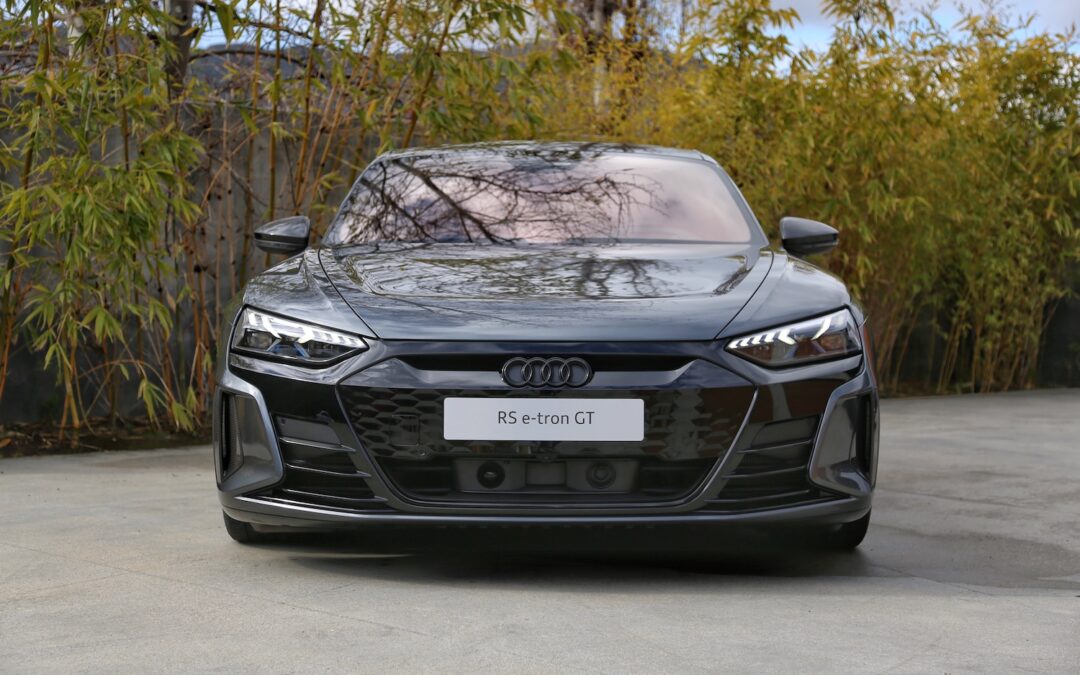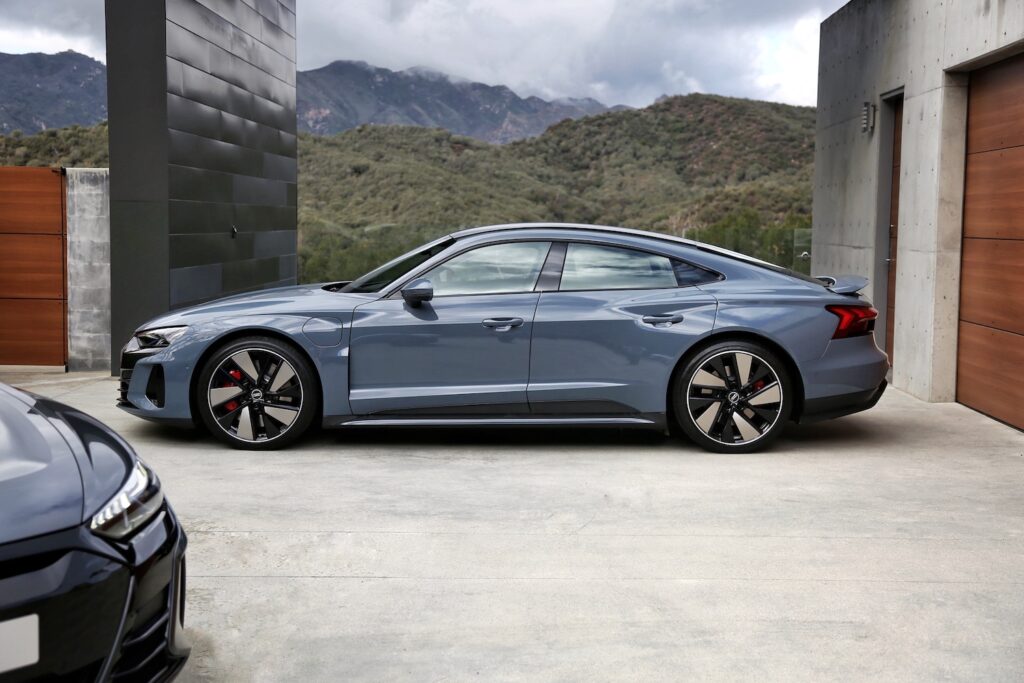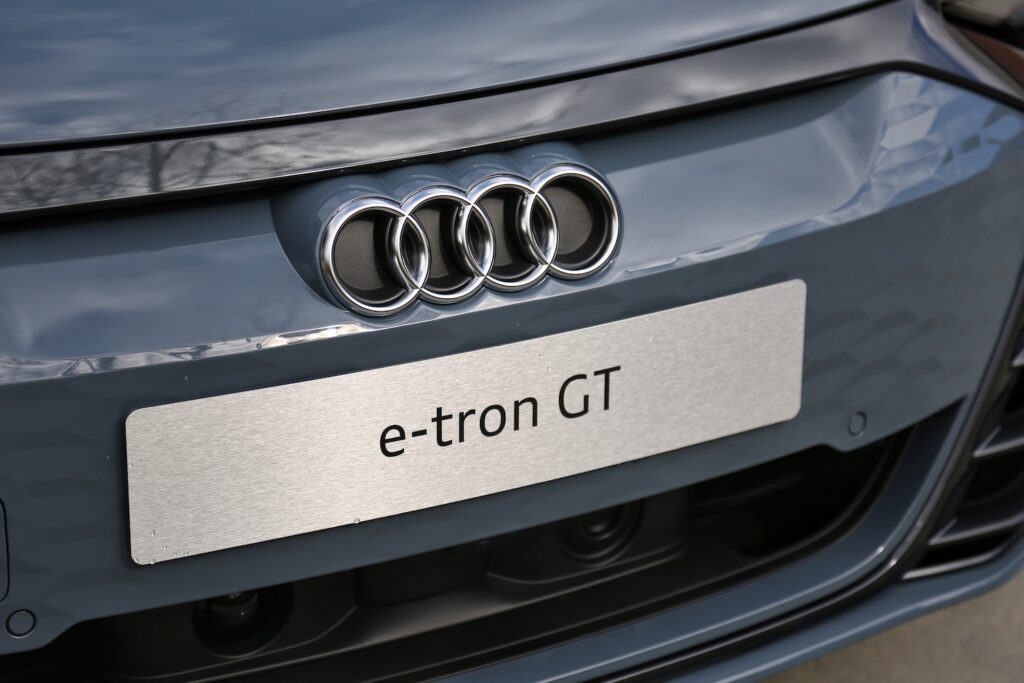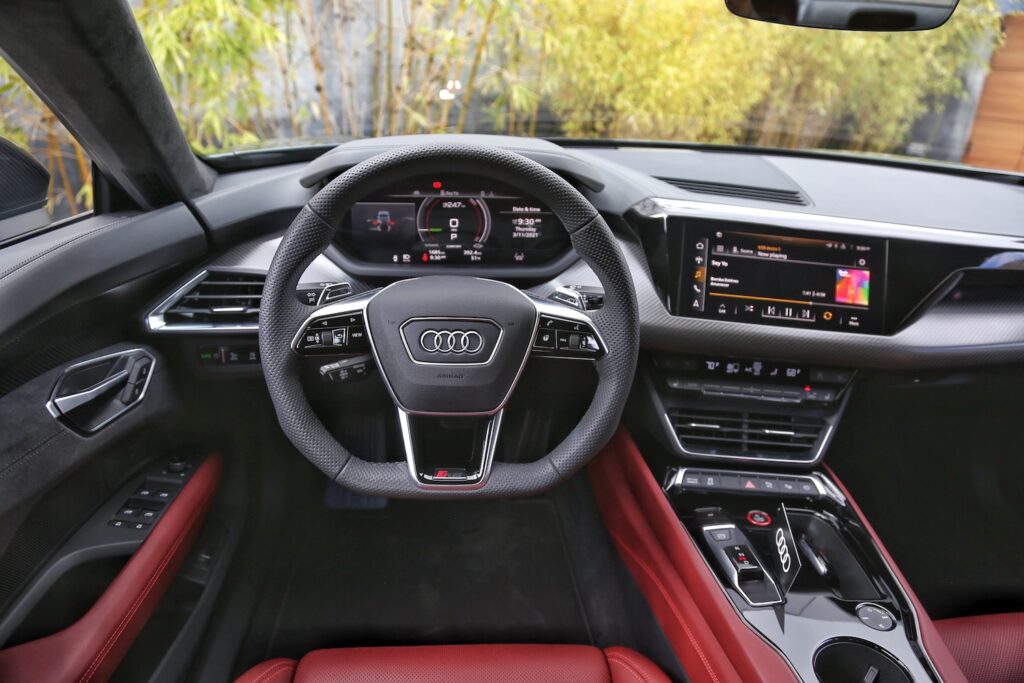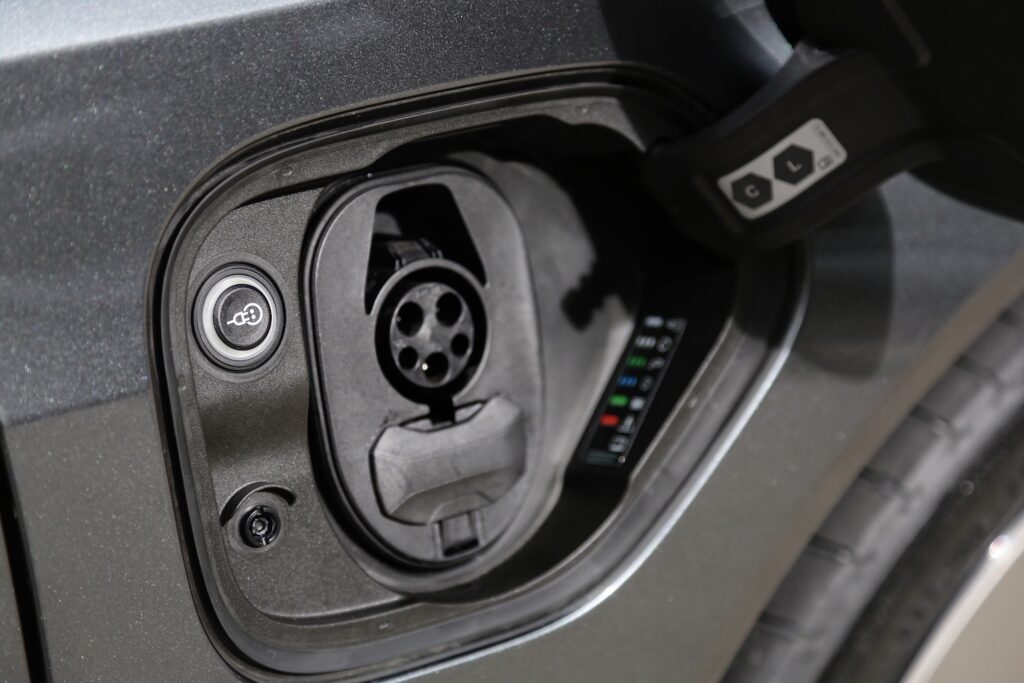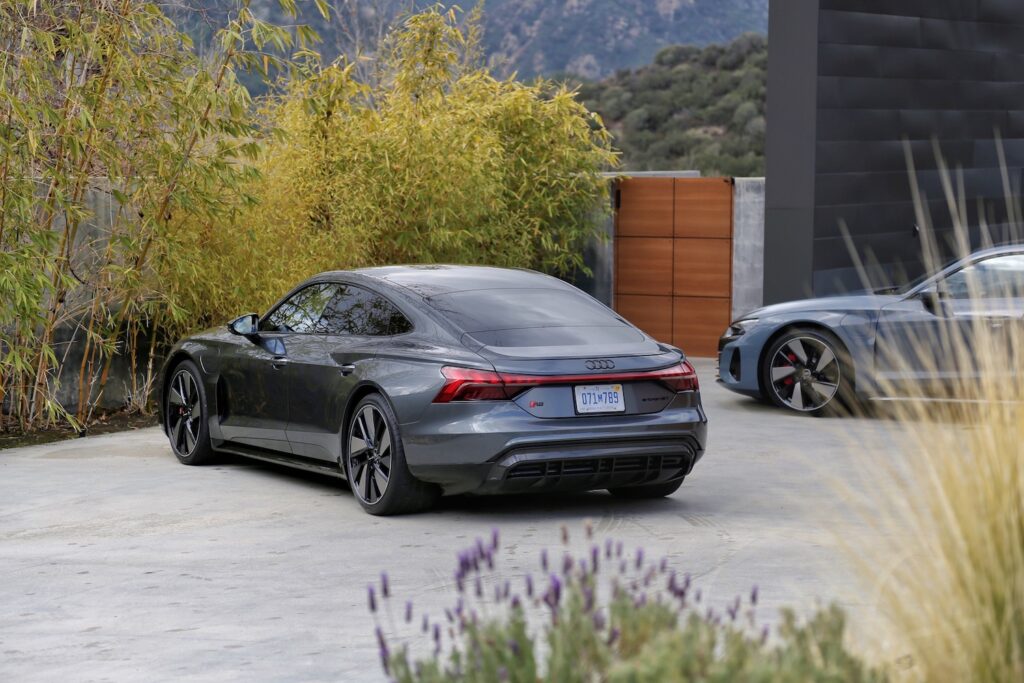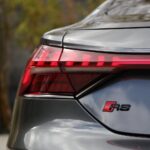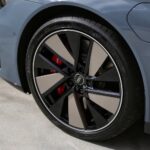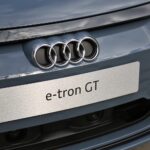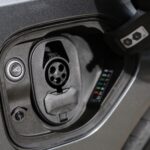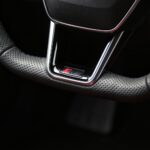Audi’s e-tron nameplate started life as a shrunken, R8-bodied concept that broke cover at the 2009 Frankfurt Motor Show. The all-electric supercar touted impressive tech for the time, including four electric motors, a 42-kWh battery, 156-mile range, and regenerative braking. Despite sizzling stats and sheet metal, however, an electric R8 only materialized as a limited-run production vehicle in 2015. Instead, the mainstream consumer came to know the e-tron as a plug-in hybrid A3 Sportback that sold for a handful of years in the mid-2010s. In the wake of that sensual e-tron Concept, this A3 e-tron’s 31-mile electric range and hatchback bod couldn’t tread water.
It was a full decade from the e-tron’s conceptual debut to Audi’s first series production all-electric. In that time, pure EVs moved from novelty to mainstream, and Audi was no longer an alternative energy trendsetter. Now the German automaker is moving quickly to recover lost ground.
By the end of this year, Audi’s two-car EV lineup will swell to five – the most exciting of which being a four-door coupe dubbed e-tron GT. With prices starting at $99,900 (before factoring a $7,500 federal tax credit), the e-tron GT will vie for Tesla’s Model S market share alongside its platform-mate, the Porsche Taycan. We spent a couple hours of quality time with Audi’s standard e-tron GT before sliding behind the wheel of the hotter, pricier RS model for a quick tour of the Malibu canyons.
Exterior + Interior Design
On paper, it seems foolish for Volkswagen Auto Group to allow both Porsche and Audi to occupy the same, still-niche segment, but a visual comparison proves the two EVs are aiming for different buyers.
In contrast to the Taycan’s rounded panels and slippery shape, the e-tron GT is an angular slap to the face (that you strangely enjoy). A choice of gloss black or body color-matching grille dramatically alters the GT’s countenance; a uniform black beak highlights the EV’s sinister LED headlights while color contrast accentuates sharp creases and a dimpled insert. RS models add carbon fiber pieces for the side air channels.
Clever battery packaging, including cutouts in the rear passenger floor permit the e-Tron GT’s ultra-low roofline (the second shallowest in Audi’s product line, after the R8 supercar). Flared wheel arches and optional 21-inch wheels emphasize the GT’s performance potential. Unlike the svelte Taycan, Audi retains traditional handles for each of the e-tron GT’s doors. Amidst a display of hard pleats and grooves, we hardly notice the door ornaments (but appreciate their convenience).
A narrow greenhouse and wide wheel arches give the e-tron GT immense hips. Complementing physical width are visual tricks like a connected LED taillight bar and an uninterrupted character line. “Bottom-heavy” sounds critical, but the e-tron GT’s chunky diffuser is favorably reminiscent of an electric slot car in search of a track.
The interior is a work of abstract art, mingling premium materials with dynamic surfaces. The RS car dolls it up with carbon fiber inlays and Nappa leather seats, but we prefer the standard GT’s wood trim and leather-free seats. Both vehicles feature Alcantara wrapping for the flat-bottom steering wheel and door inserts for a thoroughly sporty vibe. The drive selector is nearly flush with the center console and intuitively designed. An e-tron badge illuminates from the passenger dashboard and matches selectable ambient light colors.
Despite the gently tapering roofline, full-size adults fit easily in the GT’s rear seats. Deep footwells allow a more relaxed knee angle and a lower seat cushion aids headroom. Though the RS model’s carbon fiber roof looks sharp and its Alcantara headliner feels exquisite, we prefer the massive panoramic glass panel in the standard e-tron. Trunk space is a respectable 14.3 cubic feet, and a narrow yet deep front trunk adds room for a carry-on bag or two.
Technology
Like all modern Audis, the e-tron GT is equipped with a stellar 12.3-inch digital instrument cluster housing a vast spread of available information, crisp visuals, and a user-friendly interface. Important snippets like speed, navigation, road sign info, and driver assist features are duplicated on the head-up display. Most of the steering wheel controls are dedicated to the Virtual Cockpit cluster, but a voice command icon summons a virtual assistant to change everything from seat comfort settings to navigation.
The e-tron splits the difference between the mono-display R8 and the rest of the Audi lineup’s three-screen assortment with a single 10.1-inch touchscreen infotainment to complement its digital dash. Audi claims the layout underlines driver focus, but it also distinguishes the e-tron GT’s cabin from the screen-rich Taycan (available with four monitors). As we’ve come to expect, Audi’s infotainment is responsive, vivid, and logical. Haptic feedback controls and a tiled orientation permit quick, distraction-free manipulation.
The e-tron GT comes standard with forward collision warning and automatic emergency braking. Available add-ons include blind spot monitoring with rear cross-traffic alerts, lane departure warning, lane-keep assist, and adaptive cruise control. Though we were too busy carving corners to demo the driving aids, these systems are executed well in other Audi models.
Driving Dynamics
The e-Tron GT use two electric motors and a 93-kWh battery to propel all four wheels. A single-speed direct drive unit turns instant electric torque into wicked 0-60 mph sprints (3.9 seconds for the standard GT and 3.1 seconds for the RS model) while a two-speed automatic keeps the EV accelerating at highway speeds. Audi quotes 522 horsepower for the base car and 637 hp for the RS model.
Generously sized brakes peel off forward momentum with the help of adjustable levels of regenerative braking (via steering wheel-mounted paddles). The RS e-tron GT is equipped with surface-coated discs, though full carbon ceramics can be substituted for additional coin.
Those who have experienced the flurry of EV acceleration know the rush eventually fades, but the e-tron GT completes the performance picture with a special soundtrack and G-heavy dynamics. Audi’s “e-tron sound” was developed in-house to enhance the driving experience. Unlike amplifiers and artificial audio in gas-powered cars, the e-tron’s tune doesn’t make any attempt to sound like an internal combustion engine. Instead, the futuristic concert puts you at the helm of a spaceship mid-warp. The sound also changes based on drive mode and throttle tip-in to keep interstellar pilots engaged.
In the performance arena, an EV turns its low center of gravity into incredible grip. As if to demonstrate, the sky unleashed buckets of rain during our short circuit of the Malibu canyons, yet the RS e-tron GT didn’t flinch. With its traction and stability control systems fully engaged, the EV never once flashed a loss of traction as we pushed it through each bend. Greedy pulls of the accelerator and late stabs of the brake were met with effortless poise. Agreeable resistance through the steering and modular regen braking kept us tied to the experience, but it nonetheless felt a bit like cheating. Driving hard in the rain shouldn’t be easy, but the RS e-tron GT missed the memo.
Range, Safety, and Warranty
Though the EPA has yet to weigh in, Audi estimates the e-Tron GT will travel 238 miles and the RS e-tron GT 232 miles before needing juice. These figures are solid relative to the larger EV landscape, but far off the 402-mile range Tesla quotes for its long-range Model S.
When it is time to plug-in, drivers can do so via a charge port on the left or right side of the vehicle (handy for those with limited parking options). The charging news gets better, too. Thanks to standard 270 kWh charging, an 80% re-fill can take less than 23 mins. If access to DC fast charging is an issue, a Level 2 medium should fill the battery overnight.
Crash-test ratings from the Insurance Institute for Highway Safety (IIHS) and National Highway Traffic Safety Administration (NHTSA) aren’t available at this time.
The e-tron GT gets a four-year, 50,000-mile limited warranty, plus an eight-year, 100,000-mile warranty for all electrical components, including the battery. Complimentary maintenance is also bundled for the first year or 10,000 miles.
Conclusion
After a bit of a false start, Audi is on pace to convert 30 percent of its U.S. lineup to some form of electrification by 2025. This e-transformation wouldn’t be quite as impactful if Audi had a roster of A3 Sportback-esque e-trons in the works, but vehicles like the e-tron GT channel the excitement of the 2009 e-tron Concept beautifully.
The e-tron GT isn’t the only way to get a buzz, though. Porsche’s aforementioned Taycan can now be had in base form for $79,900, and while its 402 horsepower is a big step down from the standard e-tron’s 522, some may prefer the Taycan’s fluid curves to Audi’s hard creases. Then there’s the Tesla factor. Three years after Audi showed a futuristic R8, Tesla was selling its Model S with a range that would be competitive today. Of course, the EV upstart didn’t stop there. The current Model S Long Range tops 400 miles on a charge and a Plaid variant sizzles to 60 mph in under 2.0 seconds. More four-door competitors are coming soon, as well.
Between the e-tron and Taycan, aesthetic preference will persuade buyers, but Tesla can only be trumped in the ownership experience. Fit, finish, and familiarity will let conventional luxury consumers breathe easier in the new EV age. After all, you don’t need an advanced degree to operate the e-tron GT’s infotainment (or open its doors).
Yes. It won’t win a range war with Tesla’s Model S, but Audi’s e-tron GT brings genuine luxury and a dynamic form to the EV arena.

